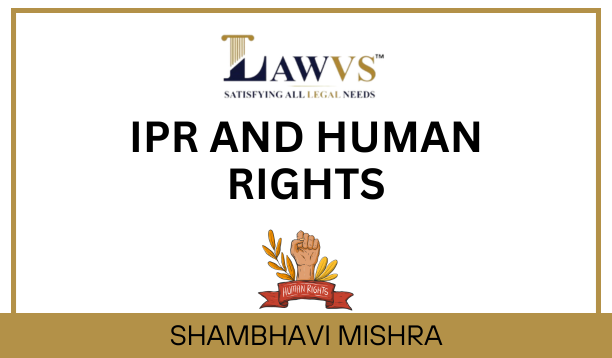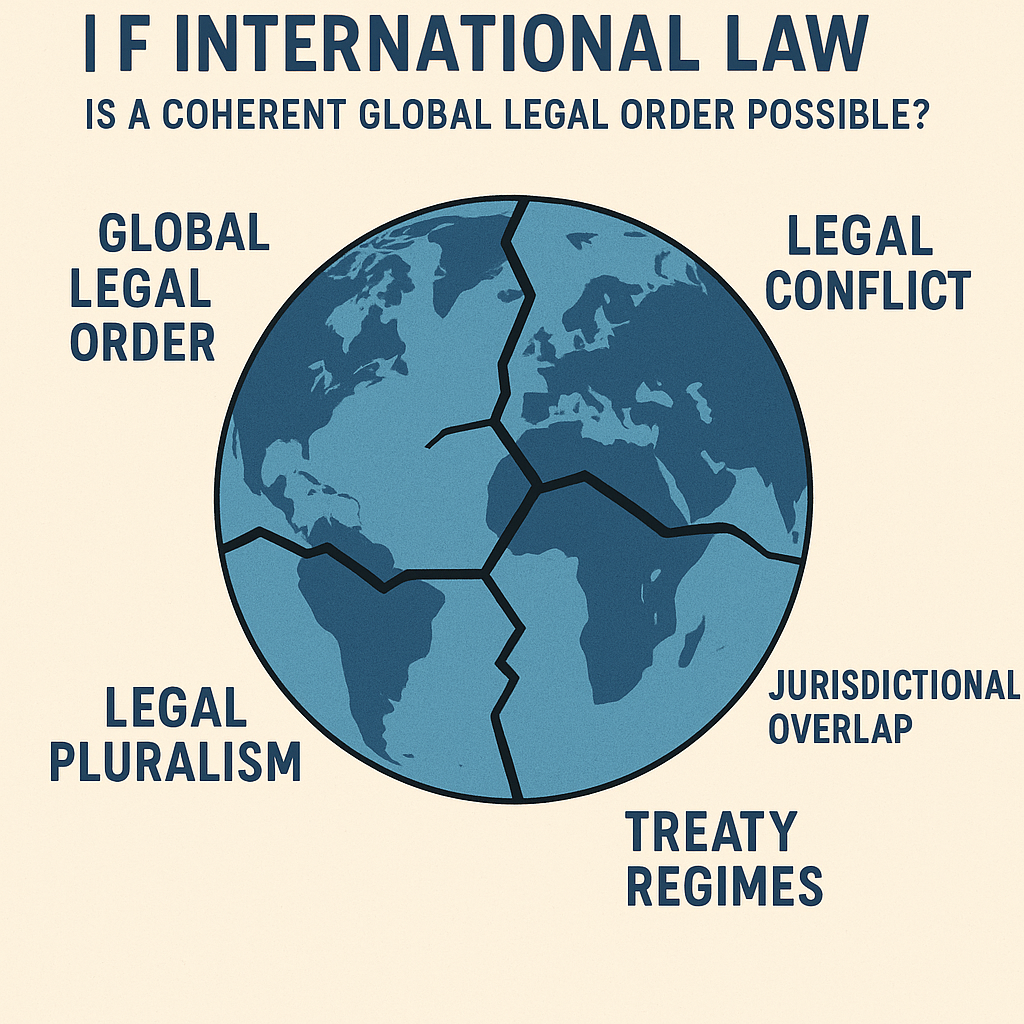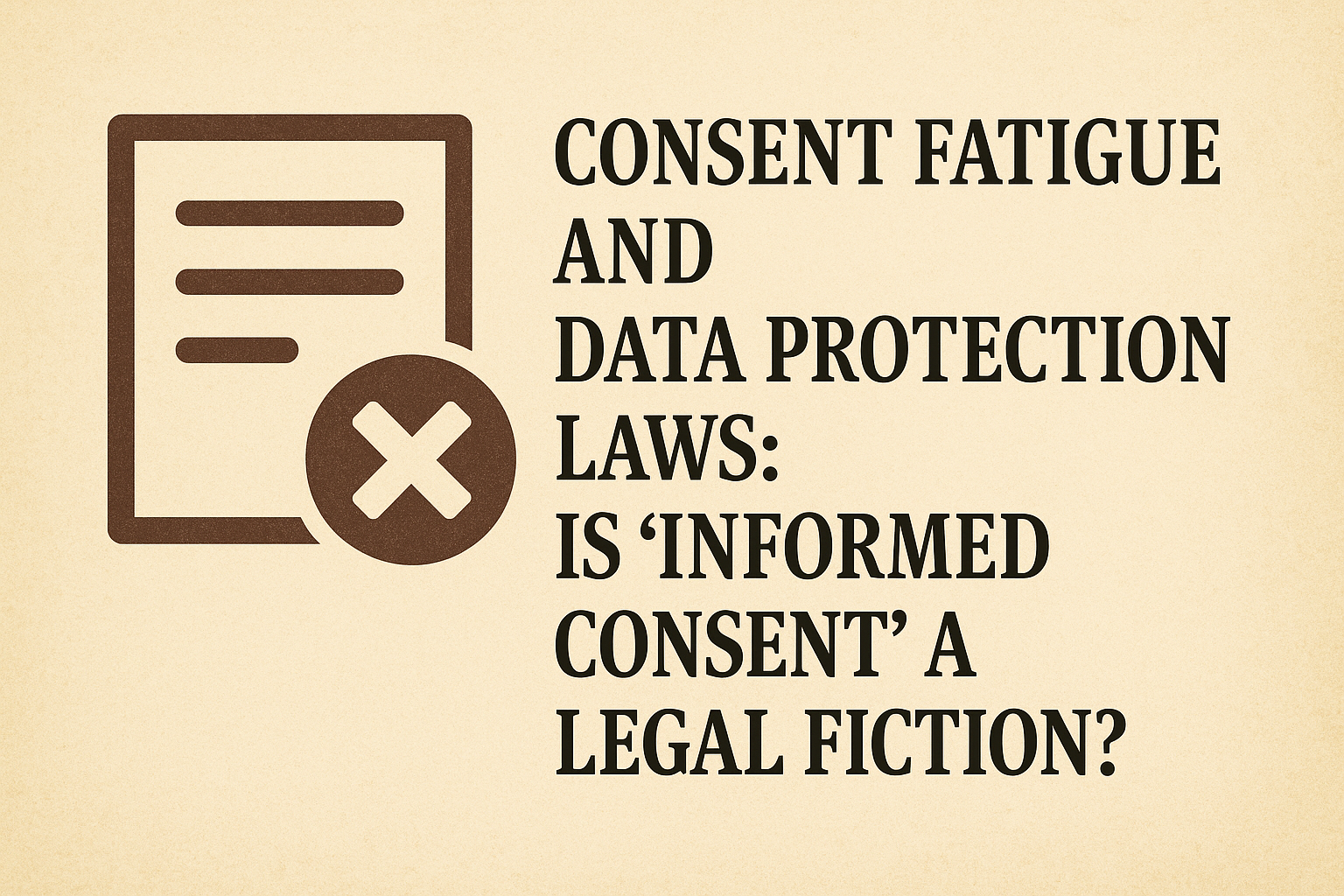Introduction
Fusing the spheres of human rights and IPR, it started a
battle for freedom and protection. Human rights is a concept that deals with
the fundamental basic rights of a person, such as equality, justice, liberty,
and dignity. Equality and dignity are at the heart of human rights. Every
person is equally treated and has a right to live with dignity. On the other
hand, we have IPR, which protects creative minds, their work, symbols, logos,
names, etc. It includes trademarks, patents, copyrights, etc. There is always a
clash between IPR and human rights, though their connection has developed with
time.
All
about IPR
Intellectual Property Rights are rights that deal with the
protection of intangible property originating from the creative mind of a
person. It is a kind of legal protection given to a person to safeguard his/her
artistic work, creation, symbol, design, etc. for a specific period. It helps
the individual safeguard their talent and promote the development of society.
The various kinds of IPR are patents, trademarks, copyrights, trade secrets,
etc. It is mentioned in Article 27 of the Universal Declaration of Human
Rights that “everyone has a right to protection of moral and material interest
resulting from the authorship of scientific, literary, or artistic production”.
IPR serves various purposes like promoting fair and healthy
competition which helps to contribute to the country's economy , protecting the
talent of the young minds, rewarding the invention and many more. Moreover , it
also helps the creators to generate some monetary benefits out of their
inventions. Breaching the law of IPR can lead to strict punishments.There are
various branches of IPR like copyrights, patent, trademark, design.Each right
has been there to serve a specific purpose and comes with a limited period of
time except trademark.
Some of the rights
are mentioned below:
Patents
Patents are the
rights which are the exclusive rights which are granted to an investor
by a government. These are provided for a limited period of time. Its aim is to
motivate the inventors to promote more inventions, new ideas and technologies.
Trademark
It is used to protect designs, slogans, names, symbols. It
helps to protect the content from other sellers and it also helps us to
differentiate it from others.They play a crucial role in protecting and
safeguarding the rights of other
sellers. Its aim is to give an identity to the source of goods. Anyone can
acquire this right through registration.
Copyright
It helps us to protect literary, musical and artistic works.
It helps us to protect the medium of expression. It gives an exclusive right to
the creator to perform, display and to get benefits out of their work. It not
only provides incentive benefits but
also recognition in the society.
Design
It protects the basic appearance of any product like
ornaments, patterns and shape. It prevents copying the product design which
helps them to distinguish between other fake products. It is also attained
through registration.
Role
of IPR in India
In India we adopted National Intellectual Property Rights in
May 2016 with the objective of “
Creative Indian ; Innovative India”. Several acts were made in order to protect
IPR law such as the Patents Act, 1970, the Copyrights Act, 1957, the Trademark
Act, 1999. The vision of these laws were to provide legal protection to
inventions and to safeguard the other forms of IPR. These laws provide a sense
of security to the investors so that they can freely invest in the product.
Additionally, it also ensures that the consumers can have fair competition and
good products and services. Keeping all the benefits in mind India became a
member of WTO and also became a part of the agreement on Trade- Related Aspects
of Intellectual Property Rights (TRIPS).
All
about human rights
Human rights are those inalienable basic rights that have
been entitled to an individual since their birth. Nobody can take away human
rights from anyone, though we can impose certain restrictions on a person to
some extent to use their rights. There are several types of human rights like:
Civil
Rights and Political Rights
These rights ensure individual freedom, privacy, voting
rights, association, freedom of speech etc. . It protects an individual's
freedom from government interference. In every democratic country people have
their own choices to elect their memories, to take their decisions and to stand
against their wrong.
Economic
Rights
These rights protect individual ability for economic
activities and provide him with a basic living standard. It includes health,
working conditions, education etc. ICESCR protects economic rights. Right to
work is protected under Article 6 of ICESCR which states that every person has
an opportunity to earn on their own. Fair and equal opportunity is being
provided.
Cultural
Rights
In a diverse country like India we have many committees and
each community has their own cultural rights. Therefore, these rights are meant
to protect individual sentiments
regarding his culture. It not only safeguards personal cultural rights but also
provides them liberty to profess and to participate in their cultural
activities.
Indigenous
People's Rights
These rights recognise the political, social and cultural
rights of indigenous communities. They include the protection and preservation
of cultural identity, the participation in decision making and promoting self
determination.
Some
features of human rights are:
Equality
Equality means equal status of opportunity, rights,
treatment and status. It states that all individuals in the society are equal
and should be treated equally in the eyes of law. Every person in the society
is equal and has equal legal, fundamental and constitutional rights. Every
person should have the opportunity to access education and other basic
resources.
Indivisibility
Interdependence of rights means how one right is dependent
on the other right. It signifies how one right is dependent on the other right.
If one right is violated how it will affect the enjoyment of the right.
Universality
It means that all human rights are
applied to each and every citizen of the country and no one should be deprived
of it just based on their caste, race
and sex. Universal declaration of human rights affirms the universality of
human rights and all the nations respect these rights.
In Section 2(d) of the Human Rights Act, 1993, it is stated
that “human rights means the rights relating to life, liberty, equality, and
dignity of an individual guaranteed by the Constitution or embodied in the
International Covenants and enforceable by courts in India”.
Evolution
of interconnection between IPR and human rights
IPR and human rights have a dynamic relationship that has
evolved. Initially, IPR focused on protecting and safeguarding innovative minds
and their works; on the other hand, human rights deal with the basic human laws
that ensure the dignity and integrity of a person. Later, this led to a
conflict between the two concepts. Several international discussions and
international agreements were conducted to maintain a balance between them.
Organizations like the World Intellectual Property Organization (WIPO) and the
Universal Declaration of Human Rights (UDHR) have made remarkable efforts to
deal with the complexities of IPR and human rights.
Overlap
of IPR and human rights
Human rights and IPR both had a greater evolution with time,
and we were concerned that their intersection also expanded. IPR, which is
meant for the protection of creative minds,
later took place in the Universal Declaration of Human Rights (UDHR) for
the benefit of the rights of Indigenous people. In some places, IPR violates
some of the basic human rights laws, which are mainly concerned with economic,
social, and cultural rights.
ICESCR
and IPR
The International Covenant on Economic, Social, and Cultural
Rights (ICESCR) was adopted on December 16, 1966, by the United Nations General
Assembly. It was a multilateral treaty that dealt with the protection and
preservation of common economic, social, and cultural rights. It outlines
socioeconomic rights, whereas Intellectual Property Rights (IPR) deal with
patents and copyrights, which contradict ICESCR in promoting access to
cultural, social, and technological rights.
Article 15 of the ICESCR deals with the right of everyone to
enjoy the benefits of scientific progress and its applications; in contrast,
IPR protects scientific innovations. It is very important to strike a balance
between traditional knowledge and technology. For example: in a country where
there is a large population, it is very difficult for people to access
technology and knowledge, yet if we protect intellectual property, we are
unable to access the knowledge and other resources available to the public at
large.
UDHR
and IPR
The Universal Declaration of Human
Rights (UDHR) deals with basic human fundamental rights like the right to life,
the right to equality, etc., while the IPR deals with the protection of the
rights of the creative mind.
UDHR is a wider concept and non-discriminatory it does not
vary from human to human, whereas IPC protects a particular group of people.
Their conflicts start with Article. 27, where it is stated that “everyone has a
right to freely participate in the cultural life of a community, to enjoy the
arts, and to share scientific advancement and its benefits. For example: in the
right to health, the drugs that are made through medical research are being
promoted by the government, but on the other hand, their high cost is again
harming human rights. Therefore, it's the government's responsibility to
maintain the proper balance between UDHR and IPR laws.
TRIPS
and human rights
Trade-Related Aspects of IPR is a treaty that deals with IP
rights. It specifies certain exceptions and restrictions that help balance
public welfare and the development of society. It specifically raised concerns
regarding medication and its impact on individuals' rights to health.
Impact on
Health - Strict
IP laws limit the access to and availability of some important medicines. It
raises questions about the fair distribution of medicines and healthcare.
Transfer of Technology
- TRIPS
focuses on the transfer of technology and deals with provisions related to the
protection of inventions and undisclosed information. A mandatory licence under
TRIPS enhances the transfer of information.
Policy Reforms - Policy reforms empower human rights
at the local, state, and national levels.
Policies effectively utilise TRIPS flexibilities. For example: licensing
will ensure the affordability of medicines, which will help the welfare of the
public.
Role
of IPR in the realisation of human rights
IPR in the realisation of human rights is complicated and
multi-dimensional. IPR is a negative concept that restricts the basic human
rights of a person. IPR impacted various rights, which are as follows-
Right to Health
The right to health is a fundamental right, and if it is
harmed, the country cannot survive. In India, Article 21 talks about the right
to life, which includes the right to health. In the current scenario, we can
see there are numerous reports from WHO regarding the bad health of the
countries and where the right to health is not properly implemented. We can say
that poverty, lack of awareness, and carelessness are reasons for it, and
patent protection is also one of them. Pharmaceutical patent protection imposes
restrictions on some useful medications, which results in high costs and limits
access, specifically in developing nations.
Cultural
Rights
Restrictions imposed by trademarks and copyrights lead to
obstructing the competency of a person to express their ideas and emotions
towards their culture. It can endanger the cultural identity of a particular
group, which affects the progress and development of a country. Cultural rights
are a sensitive topic because people's identities and their roots are connected
with them. It is a topic of discussion when it is violated.
Access
to Knowledge
Laws are meant to be strictly interpreted in the case of
copyright; they restrict the free flow of knowledge. Safeguarding patents and
copyrights results in the high cost of medicines and limited access to other
resources. Educational resources are constrained, which limits the circulation
of knowledge among the public at large.
Freedom and Equality
Strict interpretation of IPR laws leads to a fear that might
prohibit a person from freely expressing their ideas, impacting freedom of
expression. The communities that are affected due to the high cost of medicine
reflect the violation of the principle of equality.
Confidentiality
Issue
Sharing information among entities can be dangerous as it
can raise privacy concerns, specifically regarding personal information. For
advertisement purposes, some online platforms enquire regarding personal
information, which is dangerous and should be prevented.
Role
of human rights in the realisation of IP rights
Human rights played a crucial role in the realisation of the
IPR. It encourages new ideas to make sure that they benefit society.
Motivation
for Creativity
Human rights ensure that every person should receive a
reward for their piece of work. At the same time, it makes sure that it also
benefits society.It motivates people to create more and in return they receive
consideration.
Freedom of Expression
Freedom of expression is guaranteed by human rights. It
asserts the right to ideas. It helps
the creators express their ideas, which helps them create new inventions that
can ultimately contribute to the betterment of society.
Public
Interest
Human rights promote the public interest, mainly the right
to health, the right to education, and the protection of vulnerable groups. It
ensures that IP law does not restrict them.
Conflict
of IPR and human rights
IPR rights are based on economic growth, whereas human
rights are inalienable fundamental rights that are based on social and cultural
principles. The major conflict between IPR and human rights is regarding the
accessibility of medicines, which limits access to life-saving opportunities;
cultural rights that are being exploited; strict interpretation of laws that
may lead to infringement of freedom of expression; and the right to privacy
being hampered.
Here are some examples of conflict between IPR and human
rights:
Freedom
of Expression V. Copyright
There is always a clash between freedom of expression and
copyright. Putting both the rights in a single frame is a topic of discussion.
Fair use of copyright and balancing freedom of expression is very necessary.
Hence, few restrictions are imposed on both the rights. Every person in the
country is allowed to express their emotions and ideas but to an extent whereas
at the same time copyright should be used for fair dealing only. Limited use of
copyright materials were allowed for the purpose of criticism, commentary,
research etc.In a democratic country we have the importance of both the rights
but within the ambit of law. Therefore, if both the rights are used carefully
then they would lead us to an innovative and free of expression society. It
will help us to recognise the rights of both creators and people of society.
Cultural
Rights Vs. Intellectual Property Rights
There is always a conflict between IPR and cultural rights
that harm the cultural sentiments of indigenous communities. Indigenous
communities had their own practices which have been followed for a long time
but after recognition of IPR such as patents or trademarks their traditional
knowledge is being harmed. This harm may lead to biopiracy. Balancing both the
rights is very important for fair and equitable access. Certain legal
frameworks should be formed to ensure that these communities should receive compensation
for their knowledge and genetic resources.
TRIPS
Agreement and Human Rights
An area of intersection between TRIPS Agreement and
Intellectual Property Rights arises from the establishment of TRIPS Agreement.
TRIPS Agreement was formed for the protection of Intellectual Property Rights
such as trademarks, patents, design etc. This agreement mandates IPR in all
developing, developing and developed countries. It was necessary to secure the
rights of the creators. Earlier, patents were only mandatory for the
pharmaceutical process and not for the products. Hence people easily misuse this
loophole for their own monetary benefit. However due to the TRIPS
Agreement it limits the availability and
affordability of the medicine which is against human rights.
Therefore, there is a need to balance Intellectual Property
rights and TRIPS for the protection of the goods and services and for the easy
availability and affordability of the medicines. It will help us to save many
lives.
COVID
- 19 and Right to Health
The foremost and recent example to balance right to health
and Intellectual Property Rights is COVID - 19. In the recent year 2019 when
COVID- 19 hit a large number of people there was a debate regarding vaccine
equity and nationalism. There was a discussion regarding calls of Intellectual
Property rights so that access to vaccines can be easily possible and they can
save lives.
It was also made sure that affordable medicines should be
provided to the people. It was necessary to bring back balance between
Intellectual Property Rights and Right to health for promoting life saving
treatment and ensure the proper accessibility.
Resolution
of the conflict
To develop a harmonious relationship between the IPR and
human rights, the government intervenes and provides high-cost medicines at a
low cost with a compulsory licence. It will help to increase the production of
medicine in the country. Transparency should be ensured, and affordable
medicines should be provided. Patent laws are required to be flexible, and
funding must be increased. Moreover,
frameworks and guidelines are recommended to be introduced for the protection
of culture. Identifying their culture and safeguarding their rights will
sustain the culture for future generations.
Additionally, ensuring proper access to educational
resources should be easily accessible, and proper steps should be taken to
ensure that each person in the country is aware of the information. Public
participation shall be promoted, and the government should provide free data
for public welfare. The liberal interpretation of certain laws can result in
the free exchange of ideas, which will promote freedom of expression. International organisations like the WIPO and
WTO should analyse new laws that do not contradict human rights. On top of
that, for privacy concerns, policies should be adopted, and the right to
privacy should be kept in mind.
The
need to balance IPR and human rights
Balancing IPR and
human rights is necessary to ensure a smooth relationship between the two
concepts. To ensure the implementation of ethical principles and the welfare of
society, we need laws that should ensure the benefit of society and encourage
creativity. The free flow of knowledge should be promoted, yet the well-being
of an individual should be kept in mind.
Recent
developments to strike a balance between IPR and human rights
Recent developments to strike a balance between IPR and
human rights are:
Convention
on Biological Diversity (CBD)
It promotes the sustainable use of biodiversity. It
emphasizes the equality of sharing benefits, and specifically, it focuses on
preservation and sustainable use. It impacts IPR by maintaining a balance
between biodiversity and its equitable use. It does not lead IPR to exploit genetic resources.
DOHA
Declaration
It focuses on the importance of promoting medicines. It
ensures availability and accessibility, especially in areas where public health
is harmed. It took steps to promote public health without harming intellectual
property rights. It created a balance between IPR and human rights.
TRIPS
It implemented provisions to protect public health. It
issued a compulsory licence to the medicines as well as allowed the use of
patent inventions without the permission of the patent holder. For making
medicines, it was easier to import and export the medicines without the
knowledge of the patent holder.
Related
case laws/ case studies
1.
Bayer Corporation v. Natco Pharma
Ltd. (2013)
Bayer is a multinational pharmaceutical company in Germany,
while Natco Pharma is an Indian pharmaceutical company. This case deals with
the compulsory licence to manufacture a patented drug that was owned by Bayer
Corporation and was granted to Natco Pharma Ltd. in 2012. It was directed that
Natco Company pay a 6% royalty on the net sales. It was non-exclusive,
non-assignable, and valid for the remaining term. The multinational company
appealed the decision, but the Intellectual Property Appellate Board held that
it should uphold the increase in royalty to 7% on the sales of patented drugs
under its brand name.
2.
Roche v. Cipla (2008)
It deals with the drug “Erlotinib”, which treats cancer. The
petitioner Roche (patent holder) filed the case against Cipla, stating that he
infringed on his rights by selling “Erlotinib” as "Tarceva.”. The Delhi
High Court favored Cipla, and the SPL, ‘Roche filed’, was also declined. But
later, the judgment finally went in favor of Roche. Cipla was liable to pay a
heavy amount of Rs. 5,00,000 to Roche. A permanent injunction was ordered on
the manufacture of Tarceva.
Conclusion
In conclusion, harmonizing the balance between IPR and human rights is a journey that will take a lot of commitment and dedication. International organisations, treaties, and conventions aim to create a balance between IPR and human rights that will not only reward the creative mind but also maintain a proper legal system. Ongoing challenges will lead us to innovation, which will work on the path of fundamental principles.








